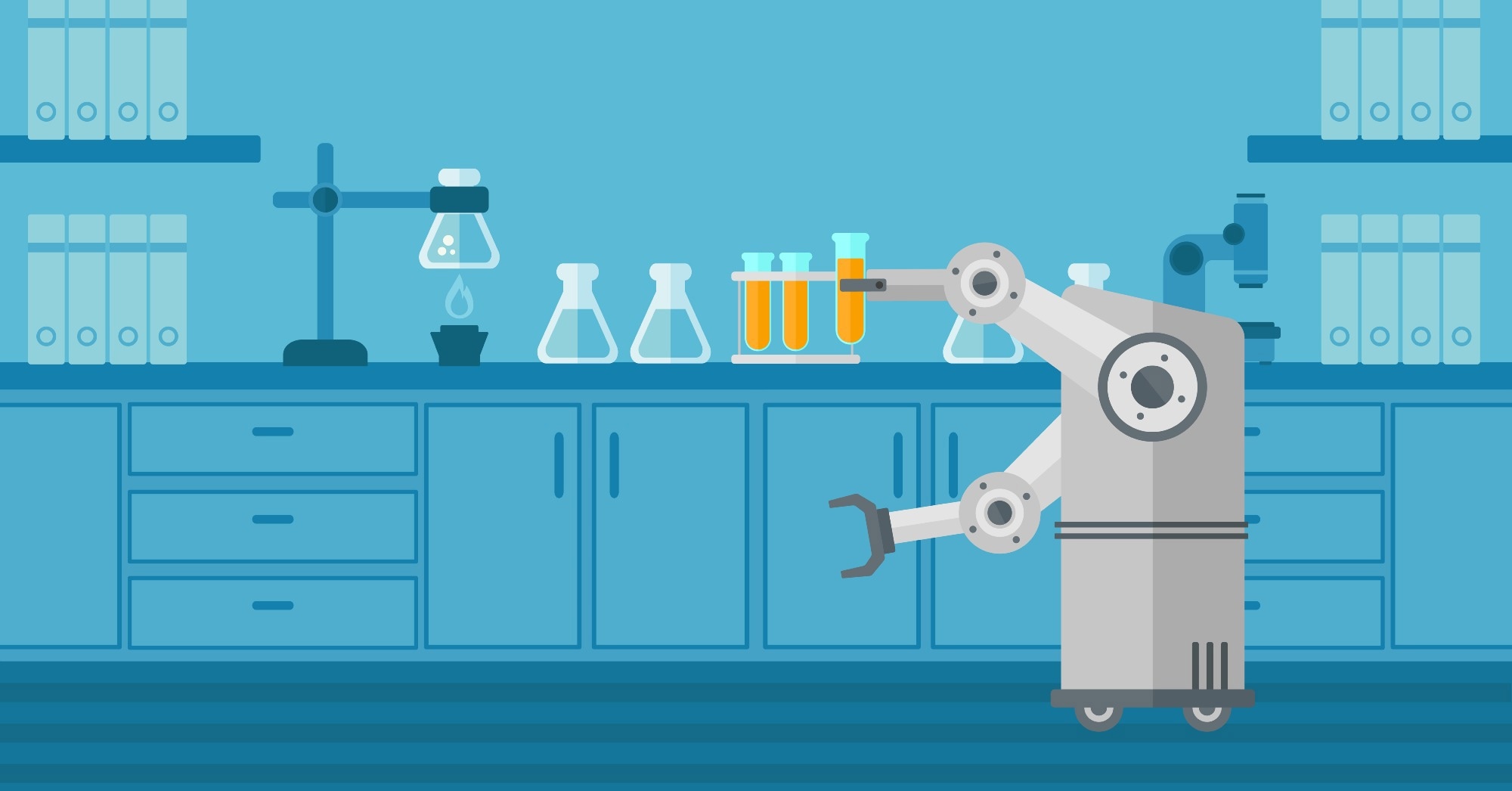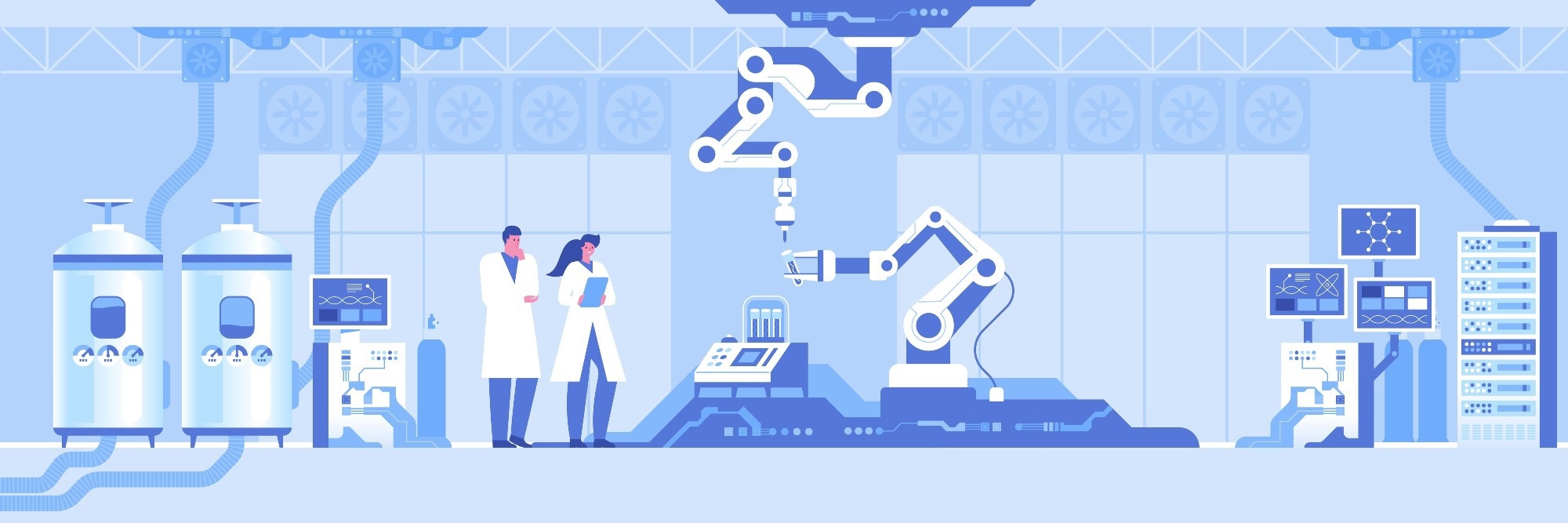Biotechnology harnesses the power of biological systems or organisms to develop products or provide services. A simple example of biotechnology is using yeast (biological organisms) for baking bread (final product). To use biological systems efficiently, biotechnology requires extremely precise processes. The fourth industrial revolution, Industry 4.0, brings automation into the spotlight, which can be applied to biotechnology for maximized efficiency.

Image Credit: Visual Generation/Shutterstock.com
Even though some biotechnological processes have been around for centuries, such as fermentation or brewing, biotechnology has recently been identified as a high-priority science. It has a multidisciplinary approach and is applied in various sectors, such as health, agriculture, energy, livestock, and environmental.
Biotechnology in the health sector is especially important as it produces proteins such as insulin or growth hormone. It is also used to develop biological therapies like cell and gene therapies, amongst others.
Biotechnology is also widely used in agriculture to improve crops' production by inserting or deleting genes of interest. Cultures can be genetically modified to grow faster, resist difficult conditions, and microorganisms can be used to maintain the quality of the soil.
The Benefits Of Automation In Biotechnology Labs
The use of microorganisms appeals for highly precise processes and fine-tuned control of complex experimental conditions. This is time-consuming and necessitates a significant amount of manual labor. Automated monitoring and processing can considerably help biotechnology, allowing research laboratories to exponentially boost productivity and quality of results.
Automation, even though it is not prevalent yet in research laboratories, has the potential to streamline and accelerate workflows. For example, processes can be automated and monitored to ensure the best conditions are kept at all times. This improves the laboratory's productivity, accuracy, and reproducibility of results, as conditions are standardized.
Reproducibility of results is especially important as it is one of the foundations of science. A study published by Nature in 2016 revealed that more than 70% of scientists had failed to reproduce a published experiment, while 52% of the participants considered that there is "a significant crisis of reproducibility". Therefore, generating robust results by using tightly controlled experimental conditions is essential.
Automation also frees up time for scientists. Instead of monitoring conditions and performing manual tasks, scientists and technicians can focus on more complex, meaningful tasks, further improving the laboratory's output. Thus automation has a multifold effect on productivity, efficiency, accuracy, and result reproducibility. Ultimately, automation facilitates innovation, as processes can be standardized.
Beyond Lab Automation: Lab 4.0
Automation is only one of the components of the fourth industrial revolution. The lab of the future makes use of digital systems and technologies to connect physical and virtual systems. Most laboratories utilize instruments and software from different vendors, creating barriers between them all. These impediments create tedious, manual work and inhibit effective data management.
Digitalization connects people, instruments, equipment, and systems to facilitate work and collaboration. Like automation, this can be used to monitor processes and enhance productivity. Maintenance processes, for example, can be automated and supervised by a central system to prevent equipment malfunction.
Instruments and systems can be connected to the internet to promote communication. Cloud computing allows for faster, more flexible database access. Data is easily shared, allowing global collaboration; scientists can access experimental data remotely, no matter where they are. As the pandemic showed us, adaptability is invaluable, and laboratories embracing digitalization can better deal with disruptions.

Image Credit: Ico Maker/Shutterstock.com
A Glimpse Into The Lab Of The Future
A Laboratory Information Management System (LIMS) manages samples and workflows and provides a secure and centralized interface with data. Laboratories with a strong digital foundation provided by a LIMS will have access to new tools. Among these new tools, we will find artificial intelligence (AI), robotics, augmented reality (AR), and virtual reality (VR).
Artificial intelligence, as mentioned before, can automate laboratory processes, control equipment maintenance, and streamline existing workflows. It can also be used to analyze massive amounts of data generated and deliver unprecedented insights.
Robots can perform laboratory work accurately and efficiently, especially repetitive tasks, and reduce human error risk. Robots are ideal for working with biological hazards and reducing human risks. It is especially useful in biotechnology since microorganisms frequently need to be handled.
AR and VR can be used to create a truly intelligent laboratory with interactive technologies. For instance, it can be used for collaboration. Scientists in different labs worldwide can see the same environment and use the same data. It also permits real-time data capture via electronic notebooks.
Beyond The Laboratory: Wider Benefits
This future-proof environment will also attract highly skilled workers and allow existing staff to expand their skillset. The advancement of technology will create opportunities for new roles within biotechnology and outside. Industry 4.0 augments the demand for highly-skilled professionals in sectors such as sustainable waste management, environmental engineering, extensive data analysis, and many more.
Aside from being more competitive and efficient and creating jobs, innovative biotechnology labs can easily transition to sustainable practices, which is crucial to address the current global challenges. The increased productivity helps reduce the use of natural resources.
Altogether, biotechnology labs that have made the leap to Lab 4.0 will contribute to a food-secure and low-carbon future by efficiently designing advanced biofuels, more efficient agriculture practices, and accelerating the transition to a circular, restorative and regenerative economy.
References:
Further Reading